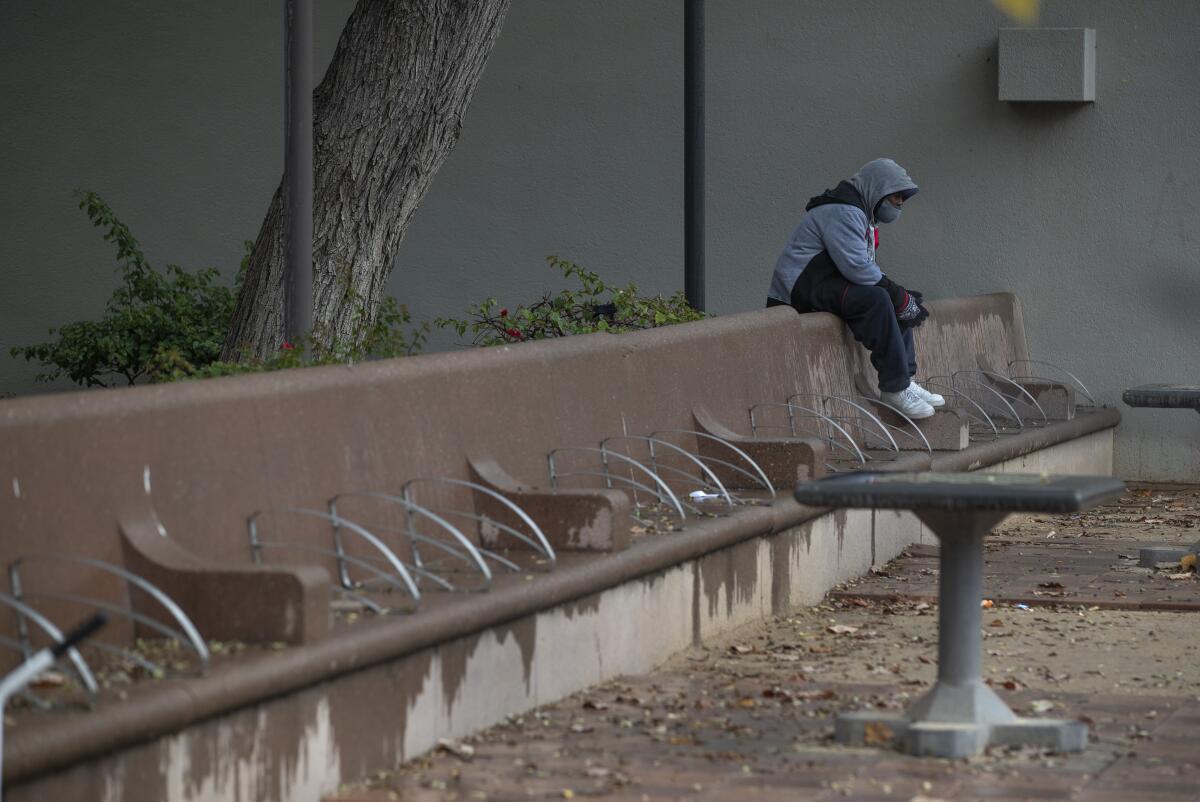L.A. County supervisors take on an unusual issue: Loneliness

- Share via
A typical meeting agenda for the Los Angeles County Board of Supervisors might include motions about juvenile halls, homelessness, hate crimes or COVID-19.
But loneliness?
On Tuesday, the supervisors took on a problem that is typically private and put it in the public eye.
They voted unanimously to ask staffers to research how residents are affected by loneliness and isolation and how the county can help — particularly during a pandemic where in-person contact has often been off-limits.
“The increase in social isolation has been driven, in part, by the pandemic, when we were abiding by the safer-at-home order, spending time apart and away from loved ones,” said Supervisor Hilda Solis, who introduced the motion. “I do believe this issue is very pervasive — it might even be one of those ‘silent killers.’”
Prolonged loneliness can take a toll on the body.
Steve Cole, a professor and researcher at UCLA’s David Geffen School of Medicine, calls the effects of loneliness a “fertilizer” for health problems such as heart attacks, cancer and Alzheimer’s.
“Loneliness doesn’t just stay in your head,” Cole said. “Its physiological effects go out into your body as fight-or-flight stress responses.”
Cole began studying loneliness in the early 1990s during the HIV epidemic.
Patients who were in the closet did not respond as well to antiviral treatments as those who had come out as gay, he and other researchers found.
Closeted gay men were more socially isolated and feared losing friends, family and jobs if they were outed.
In the absence of an accepting community, their brains reacted as if in a constant state of danger, distracting their bodies from fighting the virus.
“The human brain is built to coordinate with other human beings,” Cole said. “And when we don’t have that, when we feel isolated and socially marginalized, or disenfranchised or not liked by the community around us, those things are read out by the brain as a state of threat.”
Stay-at-home orders that forced people into isolation during the pandemic are major contributors to loneliness. So are long-term, systemic issues like economic insecurity and social and racial divisions, according to Cole and other experts.
“That’s the tragedy of lockdowns,” Cole said. “It really does make people feel frightened about the virus. It strips them of their chief safety resource: the presence of other people.”
Solis said that during the pandemic, she has been struck by the loneliness of older adults at food distribution sites or at senior centers that reopened after prolonged closures.
She said she also felt for children who had to learn virtually, keeping them from their friends.
Her thinking has been shaped by U.S. Surgeon General Vivek Murthy, who has called isolation an epidemic and argued that governments should play a greater role in addressing it.
“It’s my hope that we can begin to help individuals feel more connected to their community, which is one of life’s greatest joys,” she said in an email.
During Tuesday’s meeting, Supervisor Sheila Kuehl said she hopes the county can address gaps in social services, such as transportation for senior citizens, that might be exacerbating social isolation.
“We don’t mean to do it. We don’t mean to cause isolation,” she said. “But we are, in some cases, a part of the problem.”
More to Read
Sign up for Essential California
The most important California stories and recommendations in your inbox every morning.
You may occasionally receive promotional content from the Los Angeles Times.














